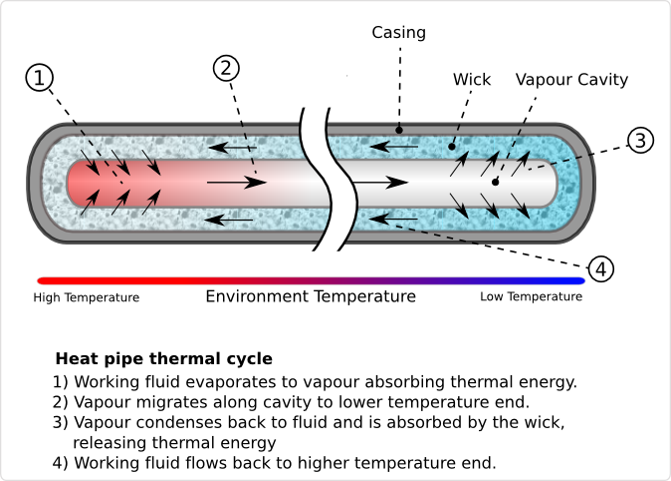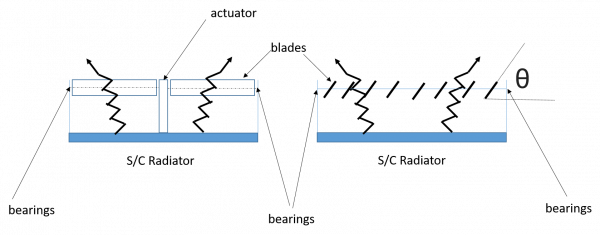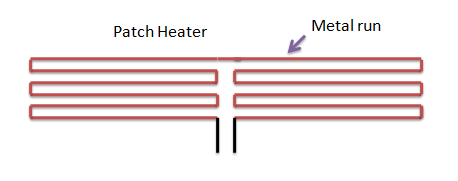Active Thermal Control System
In a satellite, the thermal control system (TCS) maintains optimal temperature range for different components. This involves proper use and disposal of internal heat produced by different components. Also, the satellite should cope up with extreme gradient temperature cycles. If this thermal control is done by using moving fluids or mechanism, or power then it is called Active Thermal Control System(ATCS).
This is achieved through conductive and radiative heat path. It involves mechanically pumped fluid or heating elements to perform heat transfer. ATCS can handle large heat loads and also provides a degree of control over how to manage these loads.
Generally we don’t develop ATCS in case of nano-satellite as it imposes high power requirement and increase mass and mechanical complexities.
Contents
Environmental Conditions in Low Earth Orbit (LEO)
Generally all nano-satellite are placed in Low Earth Orbit. Earth’s Albedo and infrared emission imposes need of thermal control. Long eclipse duration is the characteristic of LEO. small instruments and solar panels have small thermal inertia, so they can easily affected by the thermal cycles.
Typical operating range of important components
- Batteries have a very narrow operating range, between −5-20˚C
- Cameras: −30 to 40˚C
- Solar arrays have a wide operating range of −150 to 100˚C
- Infrared spectrometers, which have a range of −40 to 60˚C
Components of Active Thermal Control System
Heat Pipes
These devices work on capillary circulation using two phase liquid and exhibit very high and effective thermal conductivity. It consists of a tubing which is sealed off from both ends, contains small amount of fluid and annular wick material for proper fluid movement.
Need for Heat Pipes
- In space we need to transport heat from one place to another effectively. As conduction is very limited in space so we need convection, which is much faster than conduction in heat transfering. So we need to develop fast and effective heat transport mechanism. This purpose is fulfilled by heat pipes.
- Main advantage is that it can transport heat to large distances very effectively
Major components of Heat Pipes
Three major components in such a device :
- Working fluid
- Container
- Wick structure
Working of Heat Pipes
Working fluid in the wick absorbs heat and and evaporates. The vapourised fluid mixes with the vapour phase which is moving in the center of the pipe. Due to tendency of moving towards lower temperature, vapour reaches the radiating surface to transfer the heat to the heat sink. By low heat energy the vapour condenses. Annular Wick structure helps in movement of condensed vapour to the heat extracting point and again this cycle takes place. Driving mechanism is the temperature difference between source and the radiator.

Louvers
Louvers are those active thermal-control elements who can change the area of radiating surface depending upon the amount of radiating heat. In general, a louver can reject six times ore heat in open state compared to complete closed state, where it doesn’t require power. Commonly bimetallic or spring actuated louvers are used.
Working and Components
- Louver radiator consist of five main elements: baseplate, blades, actuators, sensing elements, and structural elements.
- They do radiative coupling between baseplates and ambient in open position
- The actuators actuate the blades according to the desired and current temperatures.

Heaters
Used to protect the components when the temperature is low and we need high temperature. We need to use heater as the dissipative box. These are used with thermostats or solid-state controllers to maintain accurate required temperature.
Structure and Working
- Most commonly used heater is patch heater, it contains series of resistors between electrically insulated sheets like kapton.
- These resistors generates heat when current is passed through them.
If you are done reading this page, you can go back to Mechanical Subsystem
References
This page was inspired from:
- https://en.wikipedia.org/wiki/Spacecraft_thermal_control
- Spacecraft thermal handbook
For additional reading, you can refer to:
